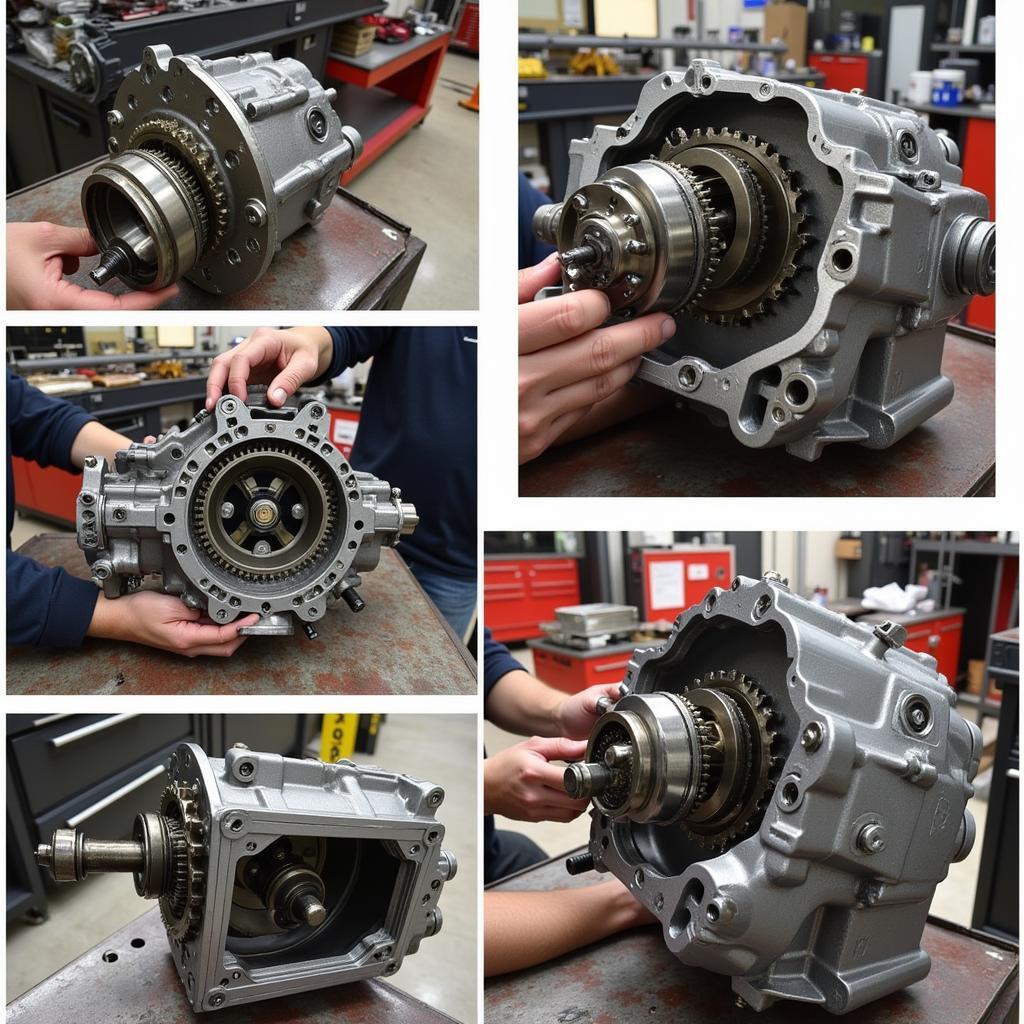Common Car Gearbox Problems can range from minor annoyances to major malfunctions, impacting your vehicle’s performance and safety. Understanding these issues is crucial for both car owners and mechanics alike. This guide will delve into the most frequently encountered gearbox problems, their causes, symptoms, and potential solutions.
Understanding Your Car’s Gearbox
Before diving into specific problems, it’s important to understand the basic function of a gearbox. Its primary role is to adjust the engine’s output to match the vehicle’s speed and driving conditions. Whether you have a manual or automatic transmission, a healthy gearbox ensures smooth transitions between gears, optimal fuel efficiency, and a comfortable driving experience. A malfunctioning gearbox can lead to reduced fuel economy, poor performance, and even complete immobility.
Common Manual Gearbox Problems
Manual transmissions, while generally robust, can experience specific issues. Difficulty shifting gears is a common complaint, often accompanied by a grinding or crunching noise. This can be caused by worn synchronizers, low transmission fluid, or a damaged clutch. Another common issue is gear slippage, where the transmission jumps out of gear unexpectedly. This can be dangerous and usually indicates a problem with the gear selector mechanism or worn gears. car on bridge statics problem helps us understand the forces acting on a vehicle, which is indirectly related to the gearbox’s performance under stress.
Diagnosing Manual Gearbox Issues
Diagnosing manual gearbox problems requires a systematic approach. Start by checking the transmission fluid level and condition. If the fluid is low or contaminated, it should be topped up or replaced. Next, inspect the clutch for wear and tear. If the clutch is slipping or engaging improperly, it can affect gear shifting. Finally, listen for unusual noises, such as grinding or whining, which can indicate internal damage.
Common Automatic Gearbox Problems
Automatic transmissions are more complex than manual ones and can present a different set of challenges. Slipping gears, delayed engagement, and harsh shifting are common symptoms of automatic gearbox problems. These issues can be caused by a variety of factors, including low transmission fluid, faulty solenoids, or a worn torque converter. Another common problem is overheating, which can damage internal components and lead to transmission failure.
Identifying Automatic Gearbox Issues
Identifying automatic gearbox problems can be more challenging than manual ones. A diagnostic scan tool can be used to read error codes and pinpoint the source of the problem. Checking the transmission fluid level and condition is also essential. If the fluid is dark, smells burnt, or contains metal shavings, it’s a sign of serious internal damage.
“Regular maintenance, including fluid changes and inspections, can prevent many common gearbox problems,” advises John Miller, a seasoned automotive engineer with over 20 years of experience.
Addressing Common Gearbox Problems
Addressing gearbox problems typically involves repairing or replacing damaged components. In some cases, a simple fluid change or adjustment can resolve the issue. However, more serious problems may require a complete gearbox rebuild or replacement. It’s crucial to consult a qualified mechanic for an accurate diagnosis and appropriate repair recommendations.
 Gearbox Repair Process
Gearbox Repair Process
“Don’t ignore warning signs like unusual noises or difficulty shifting,” warns Sarah Johnson, a certified mechanic and automotive instructor. “Early detection and prompt repair can save you time and money in the long run.”
Conclusion
Common car gearbox problems can significantly impact your vehicle’s performance and safety. By understanding the symptoms and causes of these issues, you can take proactive steps to address them and prevent further damage. Regular maintenance and timely repairs are crucial for ensuring a smooth and reliable driving experience. Connect with us at AutoTipPro for further assistance. Our phone number is +1 (641) 206-8880 and our office is located at 500 N St Mary’s St, San Antonio, TX 78205, United States. We are here to help you keep your car running smoothly.
FAQ
-
What are the signs of a bad gearbox? Common signs include difficulty shifting, grinding noises, slipping gears, and leaking fluid.
-
How often should I change my transmission fluid? Consult your owner’s manual for specific recommendations, but it’s generally advisable to change it every 30,000 to 60,000 miles.
-
Can I drive with a bad gearbox? It’s not recommended, as it can cause further damage and potentially lead to a complete breakdown.
-
How much does it cost to repair a gearbox? The cost varies depending on the severity of the problem and the type of vehicle. car on bridge statics problem can also be an issue.
-
How can I prevent gearbox problems? Regular maintenance, including fluid changes and inspections, is the best way to prevent gearbox issues.
-
What is the difference between a manual and automatic gearbox? A manual gearbox requires the driver to manually shift gears, while an automatic gearbox shifts gears automatically.
-
What should I do if my gearbox is making strange noises? Consult a qualified mechanic immediately for diagnosis and repair.




Leave a Reply